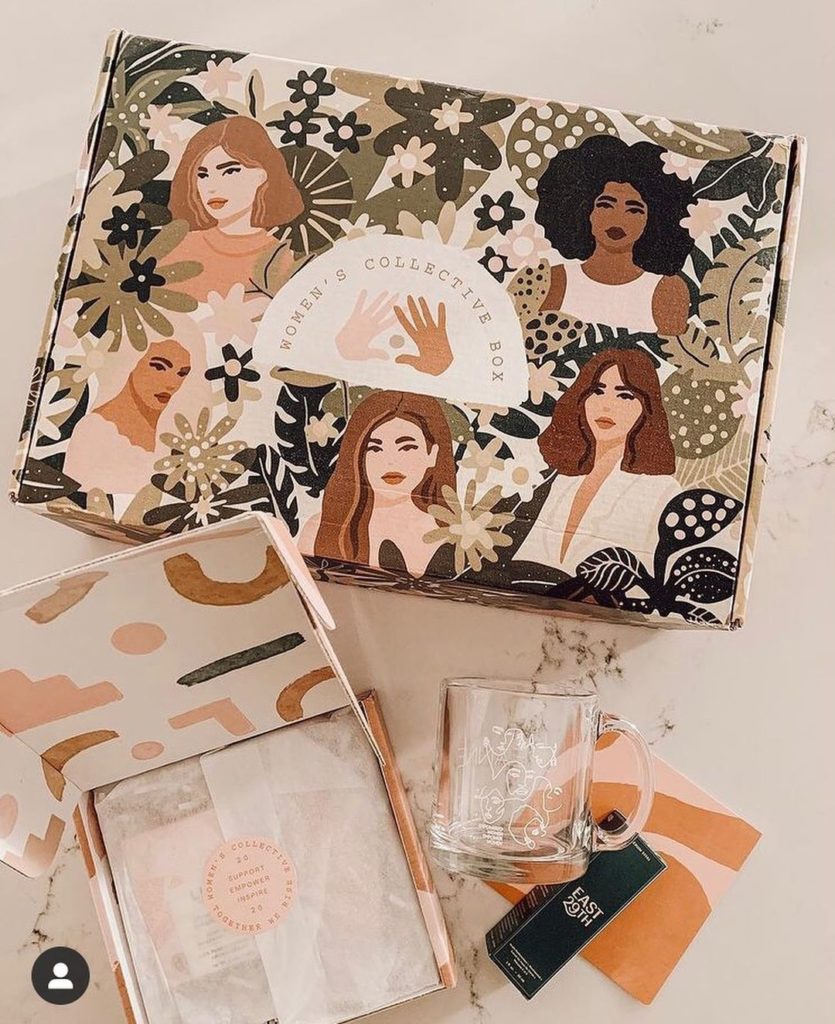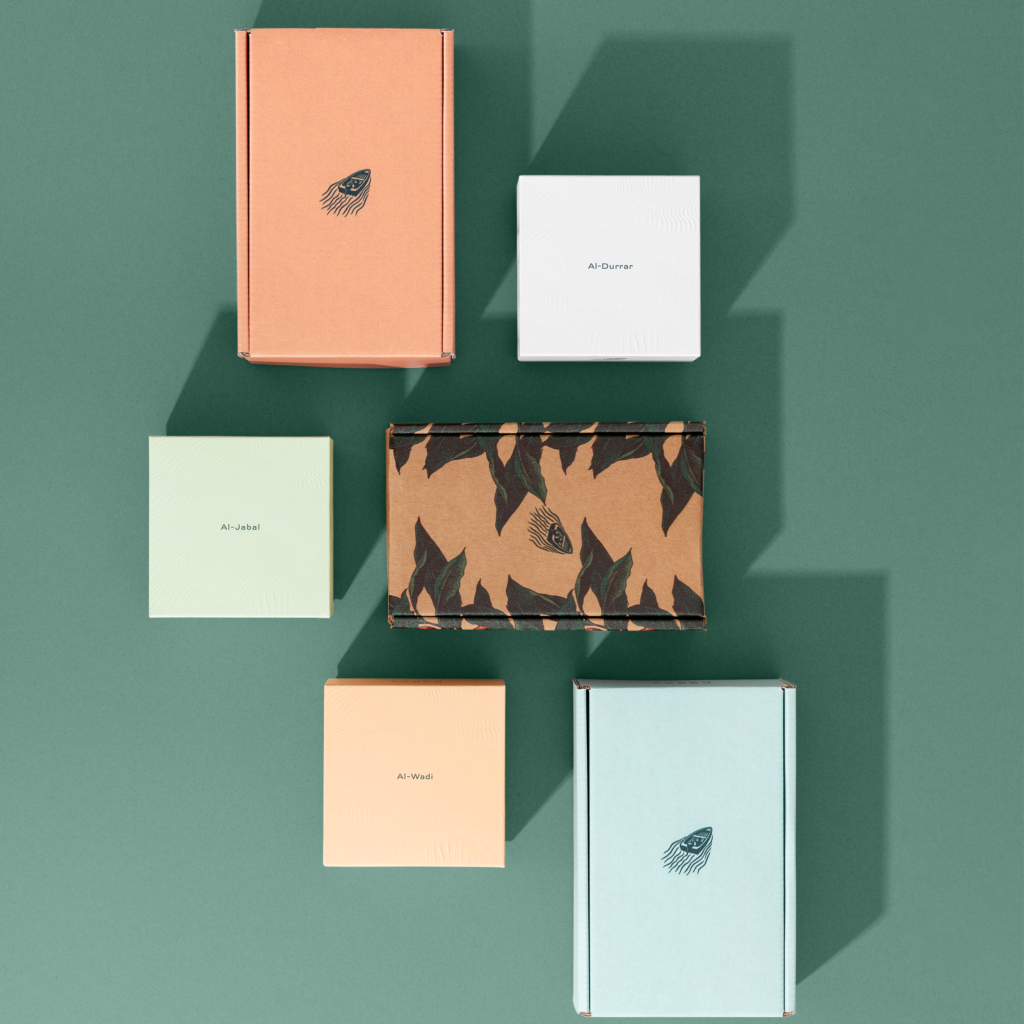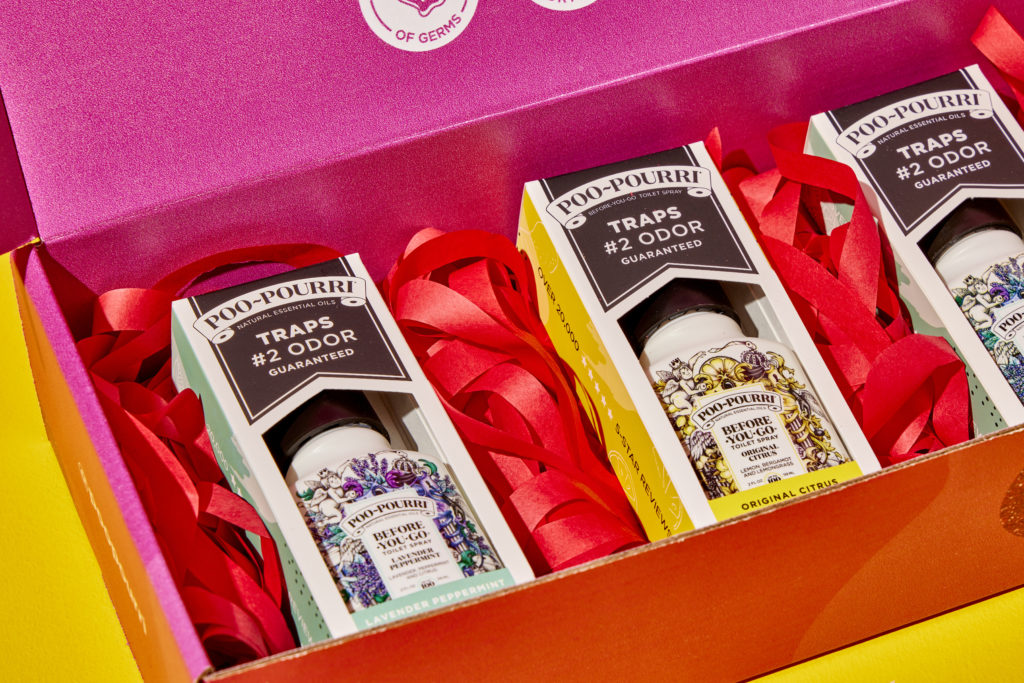Top 11 Tips to Make Your Packaging More Sustainable
Product packaging makes up 28.1% of generated municipal solid waste every year. That accounts for nearly 83 million tons of waste on an annual basis. While that sounds bad, the scariest part is that these numbers are about 4x higher than in 1960.
As e-commerce popularity continues to rise, there are no signs of this packaging waste trend slowing down any time soon. However, it’s not all bad, doomsday, dim-and-grim.
Reducing your business’s packaging impact is much easier than it sounds and is undoubtedly possible with a few small shifts in your packaging processes.
Whether you’re just getting started or are an established business looking to leave the world better than you found it, this article delivers actionable tips you can start implementing today to reduce your environmental impact.
Packaging Sustainability Trends in 2021
In the United States alone, we produce around 4.9 lbs of waste per person per day. That’s almost 300 million tons of waste every year. To make matters worse, only 32% of that waste gets recycled or composted.
There’s a lot of room for improvement to raise that recycled and composted percentage closer to and closer to 100%. While we’ll never be perfect, we can always be better.
The good news is that there are numerous (simple) things we can do as modern brands and retailers to improve these numbers.
And the even better news is that emphasizing your environmental responsibility and actively reducing your business’s impact on the environment can also make a massive impact on your bottom line.
In fact, 60% of consumers are making more sustainable purchases since the start of COVID-19, and 90% of those consumers say they will continue to focus on sustainability in the future.
The pandemic has actually pushed consumers towards more eco-friendly shopping habits with no signs of this behavior slowing down.
On top of that, 73% of shoppers are willing to change their habits to reduce impacts on the environment, and eco-friendly packaging is one of the top attributes people are willing to pay more for.
One study even showed that more than half of consumers across 11 different countries are more than willing to pay more for eco-friendly products.
Not only do consumers care about sustainability and doing their part in protecting our world, but they’re also willing to pay for it. As such, you can raise your prices and potentially generate more revenue while reducing your impact with sustainable product packaging.
Now that you know that it’s 100% worth it let’s talk about how to do it.

1. Understand the Lifecycle of Your Product Packaging
First and foremost, it’s crucial to pay attention and understand where your packaging comes from and what happens to it after your customers dispose of it. On top of that, you also need to consider the transportation and warehousing carbon footprint of your packaging materials.
Once you know these things, you can work towards making more sustainable material choices across your packaging’s entire lifecycle.
Material Origin
Most product packaging comes into existence in one of three ways: from virgin materials, partially recycled materials, or 100% recycled materials.
In most cases, it’s best to avoid using virgin materials because this means you’re using fewer new resources from day one. However, that’s not always possible. If you have to go with virgin materials, we recommend paying close attention to where they come from.
Are they made using paper from sustainable logging operations? Maybe they come from banana peels or potatoes. Plant-based packaging may actually do more harm than good since it could require the clearing of essential forests to create more space to grow those plants instead. Either way, do your research to ensure you’re making the best choice.
Partially recycled materials are the most common and easiest to find. Most of our cardboard products contain recycled materials, with our 100% Recycled Kraft corrugated cardboard for our Econoflex boxes containing the highest percentages.
Material Endpoints
Regardless of where your materials come from, you should also pay close attention to where they go when consumers are done with them.
The best sustainable materials are accessible for the end-user to recycle, reuse, or compost. If you decide on compostable packaging, you should also consider how long it takes for that material to degrade over time. The shorter, the better.
However, it’s important to remember that some materials may require industrial-grade recycling or composting and can’t be done at home. In that case, many users will probably opt to throw it away instead of taking it somewhere, so it’s best to avoid those types of materials if you can.
On top of that, some external treatments and finishes make recycling or composting impossible. Things like coatings, printing methods, and combining multiple materials play a role in how easy it is to sustainably dispose of your product packaging.
Transportation and Warehousing Carbon Footprint
Despite being easy to overlook, carbon emissions during transportation and warehousing is a crucial consideration. In a nutshell, the amount of space something occupies before you use it matters. Packing peanuts, for example, are bulky and take up a lot of space. As a result, fewer things fit in the delivery truck, increasing the carbon footprint of those peanuts. Furthermore, they take up a lot of space on the shelf. Warehouses require electricity and resources to keep running. So, the more things you can fit inside, the lower the carbon footprint for each material.
If we use SpiroPack fill instead, you can fit more into the same amount of space. It expands to 10x its packaged size, and one 10 lb. box is enough to fill nearly 300 shipping boxes. In turn, the mail carrier can fit more packages onto the truck in the same load, and more materials fit inside the warehouse. Taking up less space = a lower carbon footprint all around. Plus, SpiroPack is curbside recyclable, whereas packing peanuts aren’t (bonus!).
2. Choose Sustainable Materials
Now that you understand the packaging lifecycle, you can use that knowledge to choose more sustainable materials. Our corrugated and paperboard products include mailer boxes, shipping boxes, and product boxes in custom sizes to fit your products like a glove. With so many different types of eco-friendly packaging, you can get the packaging of your dreams while still doing your part in reducing waste and protecting the environment. Mother Nature will thank you, and your customers will too.
If you’re looking to take sustainability a step further, you can opt for 100% recycled and recyclable biodegradable shipping boxes. Our kraft Econoflex boxes are durable, sturdy, and minimalist, making them perfect for any brand looking to make a bold sustainability statement with their packaging.
However, sustainable shipping materials extend past the exterior box. When it comes to protecting what’s inside, ditch the packing peanuts for more eco-friendly options like SpiroPack or Flexi-Hex instead.

3. Use Custom-Sized Packaging to Reduce Waste
If you’re shipping products in oversized boxes, you’re throwing away a lot of money and creating unnecessary packaging waste. On top of that, larger-than-necessary boxes increase your transportation carbon footprint since fewer packages fit on the truck.
Not sure what size your boxes should be? No problem! You can use our handy sizing calculator to determine the best size for all of your products.

4. Order Product Samples Before Buying in Bulk
There’s (almost) nothing worse than ordering something and realizing you can’t actually use it when it arrives. The same goes for product packaging, too.
However, it’s particularly wasteful if you order 1,000 custom boxes only to find out they’re not the correct size. While you can make it work if they’re too big (not ideal), there’s not much you can do if they’re too small. The best way to avoid this situation is to order product samples first.
This way, you can physically put your products inside to ensure it’s the right size before ordering your full quantity. You also get a chance to see the design and make sure you’re happy with it before moving forward with your order.
We have a minimum order quantity of one, so you can order a sample without having to commit to a large number of boxes you may or may not be able to use.
5. Avoid Unnecessary Packaging and Extras
Everything you put inside the box consumes materials. While some extras serve a purpose, like sharing your brand story or adding to the unboxing experience, there are a few things you can do to reduce packaging waste without taking away from the customer experience. One example of unnecessary packaging is shipping a box inside of a box. Unless you need it for sending something fragile, you can eliminate that internal box entirely.
Some other ideas include:
- Using digital packing slips and order summaries
- Printing on the inside of your box instead of including an insert with the same info
- Reducing the number of paper inserts or choosing recycled materials
- Opting for SpiroPack or Hexi-Flex instead of packing peanuts
- Eliminating void fill altogether by using custom-sized boxes
- Ditching the plastic wrap
6. Reduce Returns, Exchanges, and Damaged Products
Returns and exchanges by mail further increase your packaging’s transportation carbon footprint since they require multiple trips in a delivery vehicle. They can also increase the number of shipping materials used for one order if you can’t reuse the original product packaging. The best way to reduce returns and damaged products is to use adequate packaging, especially when shipping fragile items.
It may seem counterintuitive since we just talked about reducing packaging, but it only makes sense to do so in a way that doesn’t put your products at risk. To reduce exchanges, be sure to use accurate product photography, videos, descriptions, and sizing charts when applicable. This can help ensure the customer knows what they’re ordering and reduces the chance that they’ll need to exchange it for something else.

7. Encourage Customers to Buy Multiple Products at the Same Time
When customers buy multiple products at once, you can consolidate the order into one box rather than shipping every product separately. This reduces the amount of packaging required and your transportation carbon footprint.
Delivering the goods takes one trip rather than several, resulting in less fuel consumption and harmful emissions from the delivery vehicle. This can be particularly helpful if you sell products customers need to buy more than once. Suppose you can encourage someone to buy three bottles of cleaning supplies at once or four packages of wet cat food in one order. In that case, they can help you drastically reduce your environmental impact on things they’re going to have to buy again anyway. You can do this by offering incentives for orders over a certain dollar amount (like free shipping or a small discount). Another option is to tell them that ordering more today is better for the environment.

8. Consider Reusable or Multi-Use Packaging
Reusable packaging is making waves in the packaging industry—and for a good reason. It’s a more sustainable approach than single-use packaging and helps conserve non-renewable resources. If you sell shampoo, introducing a reusable and refillable stainless steel shampoo bottle can drastically reduce your business’s environmental impact. Check out Hairstory, for example.

Not only does it reduce plastic waste, but it also means you can reduce packaging waste by shipping shampoo refills in more condensed and sustainable packaging that eats up fewer materials. That’s just one example, but there are numerous creative ways to introduce reusable and multi-use packaging into your business model. However, this same concept also extends to your shipping materials. I ordered a new litter box from Modkat a few years ago. I was impressed with the litter box itself, but the wow factor hit me when I realized the company designed the shipping box to double as a new toy for my cat. Despite being such a simple idea, the toy turned a one-time-use shipping box into something functional that increased its lifecycle.
9. Tell Customers What to Do with Your Packaging When They’re Done with It
We’ve all been there, looking all over for that recycling symbol or some sort of sign that the packaging we just ripped off our new *insert product here* is recyclable or compostable. If customers aren’t sure, they’re probably going to throw it in the trash.
After all the work and effort you put into your sustainable packaging, that’s the last place you want to end up. So, what do you do? Make it unmistakably clear what to do with your packaging when they’re done with it. It could be as simple as printing “Yes, hello. I’m recyclable/compostable/biodegradable. Please recycle/compost me.” or something like that in an unmissable place on the outside.
Better yet, put it in several places. Include it in their delivery or shipping confirmation email, in a follow-up email later that day, in numerous areas on the package itself, and the product listing. You could also create an FAQ and/or sustainability page detailing proper packaging disposal for various products and materials. This way, if someone Googles it, they’ll find the information they’re looking for right away. If the disposal is more complicated than throwing it in the recycle bin, make it abundantly clear how to move forward with step-by-step instructions and several alternative options if possible.
10. Shout About Your Sustainability Efforts
While talking about your sustainability efforts can be an excellent marketing tool, it can also help inspire your competitors, other businesses, and your customers to make similar efforts in working towards a more sustainable future.
According to Harvard Business Review, leveraging your social influence is one of the best ways to elicit pro-environmental behaviors in those around you. If you can show that businesses like yours are focusing on sustainable practices and doing it successfully, other businesses (and consumers) are more likely to join in.
Plus, 65% of consumers want to buy from responsible, purpose-driven brands that care about protecting and preserving the environment. So, shouting about your efforts can help inspire others to join you in making the world a better place and attract more customers in the process. It’s a win-win for you and the environment. You can talk about your efforts in numerous places, including social media, your website, news publications, email marketing efforts, advertisements, and more to help spread the word.
What Does Sustainability Mean to Packlane?
We have some pretty strong feelings about our environmental responsibility to our world and our customers. However, we firmly believe this extends beyond using recycled materials. While it’s a great place to start, we also focus on the entire lifecycle of the products we create.
For packaging to be sustainable, both the creation and use of the packaging must be beneficial, safe, and healthy for the environment throughout its lifecycle. It must also be manufactured using clean production technologies and best practices with renewable and/or recyclable materials. Sustainable packaging is physically designed to optimize material and energy, and ultimately, reduce the environmental impact and ecological footprint.
Pro-Tip #11: Go With a Packaging Supplier That Cares About Sustainability
Here at Packlane, sustainability is at the heart of everything we do. Our unbreakable sustainability principles shape every decision we make, every new product we launch, and every resource we create because we know it’s our responsibility to leave the world better than we found it.
When you choose us, you’re reducing your impact while helping us continue to reduce our own and spread the word about sustainable packaging to create a better future. Choose your box style to get started designing your eco-friendly packaging today!

FAQs
Why Is Sustainable Packaging Important?
Product packaging makes up 28% of all municipal solid waste generated every year. What’s worse, we’re producing nearly 4x more packaging waste than in 1960, thanks to rising trends in e-commerce. Introducing sustainable practices and principles can help stop this upward trend while being kinder to the environment.
What Type of Packaging Is Environmentally Friendly?
Environmentally friendly packaging comes in all shapes and sizes. With that said, recycled, recyclable, compostable, and biodegradable materials are far more sustainable than single-use plastic, styrofoam, and petroleum-based packaging.
What Is the Most Sustainable Packaging?
The most sustainable packaging is custom-fit to your products and uses recycled materials that can be reused, recycled, or composted. On top of that, it’s important to choose product packaging that’s created using eco-friendly manufacturing processes. However, it’s essential to consider the entire lifecycle of the materials you choose, from their origins to where they end up and carbon emissions during transportation.
Where Can I Buy Eco-Friendly Packaging Materials?
Here at Packlane, we offer numerous partially and fully recycled sustainable packaging materials. You get complete control over how your packaging looks, and you can choose custom sizes to reduce waste plus transportation-based carbon emissions further.
Is Cardboard Packaging Sustainable?
Cardboard and paper products made using recycled materials and eco-friendly manufacturing processes are some of the most sustainable packaging options available.










